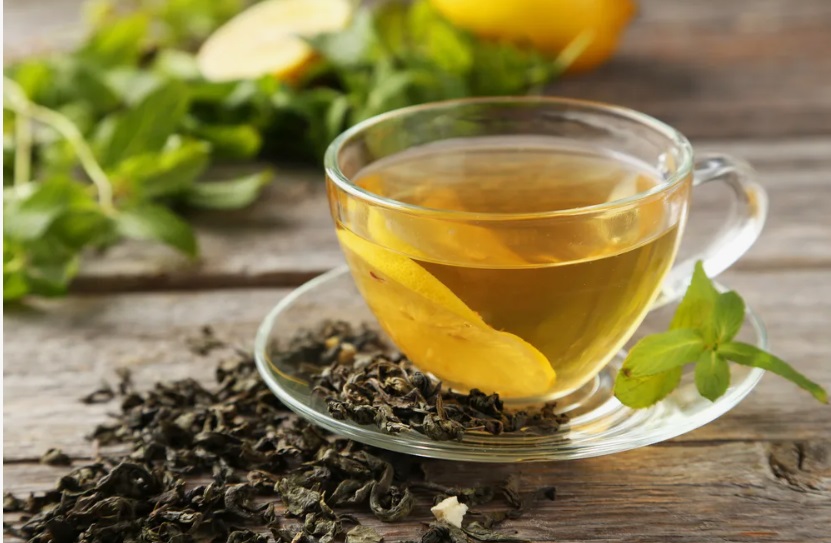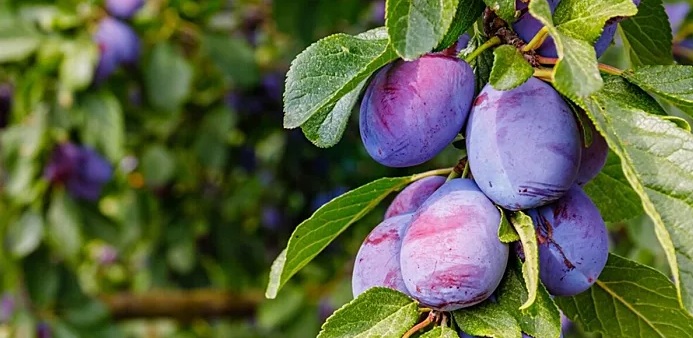What is Green Tea and Where Does It Grow?
Green tea is a type of tea made from the leaves and buds of the Camellia sinensis plant that have not undergone the oxidation and withering process used in making black tea or oolong tea. Originating from China, green tea is now cultivated in various regions of the world, including India, Japan, Sri Lanka, and Kenya. Its growth requires specific climatic conditions, typically high-altitude areas with well-drained soils, abundant rainfall, and a temperate climate. Regions such as China’s Zhejiang Province and Japan’s Shizuoka Prefecture are famous for producing high-quality green tea.
Though it is most closely associated with East Asia, green tea’s global production has expanded due to rising demand driven by its numerous health benefits and versatility.
What Are the Benefits of Green Tea?
Green tea is often regarded as a health elixir due to its rich nutritional profile. It is packed with antioxidants, particularly catechins like epigallocatechin gallate (EGCG), which are known to combat oxidative stress and inflammation. Key benefits of green tea include:
Boosts Metabolism and Aids in Weight Loss: Green tea is a well-known addition to weight-loss diets because it can help improve fat burning and boost metabolic rates.
Improves Brain Functions: The caffeine in green tea is not as high as coffee, but it does provide a slight energy boost without causing jitteriness. Combined with L-theanine, an amino acid present in the tea, it enhances focus and has calming effects.
Supports Heart Health: Regular consumption of green tea has been linked to lowering LDL cholesterol levels and improving blood flow, which can reduce the risk of cardiovascular diseases.
Promotes Skin Health: The antioxidants in green tea can help improve skin texture and may delay the signs of aging by reducing wrinkles and redness.
Reduces Stress: The calming effect of L-theanine, combined with the tea’s comforting warmth, can help alleviate stress and improve mood.
Where and How Can We Use Green Tea?
Green tea is versatile and can be used in various ways beyond drinking it as a beverage:
Beverage Form: This is the most common use of green tea. It can be brewed hot, iced, or even incorporated into lattes.
Culinary Use: Green tea powder (matcha) is becoming increasingly popular in recipes. It can be added to smoothies, baked goods, such as cakes and muffins, or even savory dishes like soups.
Skincare Products: Green tea’s anti-inflammatory and antioxidant properties have made it a key ingredient in many beauty products, including face masks, creams, and toners.
Supplements: Green tea extract is available in powder and capsule forms for those looking for concentrated health benefits.
Infused Water: Adding brewed green tea with fruits and herbs makes a refreshing detox drink.
What is Green Tea
What Are Its Health Cures?
While green tea is not a cure for diseases, its regular consumption can contribute to preventing and managing certain health conditions:
Aids in Managing Diabetes: Green tea helps regulate blood sugar levels and reduces insulin resistance. It can help those at risk of developing type 2 diabetes.
Cancer Prevention: Some studies suggest that the antioxidants in green tea may help inhibit the growth of certain cancers, including breast and prostate cancer.
Reduces Risk of Neurodegenerative Diseases: The catechins and other nutrients in green tea may lower the risk of Alzheimer’s and Parkinson’s diseases by reducing oxidative damage to neurons.
Improves Oral Health: Green tea has antimicrobial properties that can reduce bacteria in the mouth, protecting against bad breath and cavities.
Strengthens Immune System: The polyphenols in green tea boost immunity by protecting cells from damage and improving bodily defenses.
Protects Against Infections: The bioactive compounds in green tea can also inhibit the growth of harmful bacteria and certain viruses, such as the influenza virus.

A Guide to Brewing Green Tea and its Healthful Applications
Green tea, derived from the Camellia sinensis plant, has been a staple in Asian cultures for centuries, revered not just for its delicate flavor but also for its impressive health benefits. Unlike black tea, green tea is unoxidized, retaining a higher concentration of beneficial compounds, particularly antioxidants. This article will guide you through the simple art of brewing the perfect cup of green tea and delve into its potential therapeutic uses and practical applications.
Mastering the Brew: A Step-by-Step Guide
Brewing green tea is a delicate process. Over-steeping or using overly hot water can result in a bitter taste and destroy its delicate flavor. Here’s how to brew the perfect cup:
Choose Quality Tea: Opt for loose-leaf tea whenever possible, as it generally offers superior flavor and a higher concentration of antioxidants compared to tea bags. Look for vibrant green leaves, indicating freshness.
Heat the Water Just Right: This is crucial! Aim for water temperatures between 170-180°F (75-82°C). Using boiling water will scorch the leaves and lead to a bitter taste. Let boiling water cool for a few minutes before pouring. A thermometer is ideal, but you can also gauge the temperature by the size of the bubbles forming at the bottom of the kettle.
Use the Right Ratio: A general guideline is to use approximately one teaspoon of loose-leaf tea per cup (8 oz) of water. Adjust to your personal preference.
Steep Briefly: Steep for 1-3 minutes, depending on the type of green tea. Lighter teas like Sencha need shorter steeping times, while bolder varieties like Gyokuro can tolerate longer steeping.
Remove the Leaves: Once steeped, immediately remove the tea leaves to prevent over-extraction and bitterness. You can use a strainer or a teapot with a built-in infuser.
Enjoy! Savor the delicate aroma and flavor of your freshly brewed green tea.
Green Tea: A Potential Ally in Promoting Health
The remarkable health benefits attributed to green tea are largely due to its rich antioxidant content, particularly catechins, especially epigallocatechin gallate (EGCG). Research suggests potential therapeutic applications in various health conditions:
Heart Health: Studies indicate that green tea consumption may help lower LDL (“bad”) cholesterol and blood pressure, reducing the risk of heart disease. Its antioxidants may help prevent the oxidation of LDL cholesterol, a key factor in plaque formation in arteries.
Cancer Prevention: The potent antioxidants in green tea have been linked to a reduced risk of certain types of cancer, including breast, prostate, colon, and skin cancer. EGCG may inhibit cancer cell growth and promote apoptosis (programmed cell death) in cancerous cells.
Brain Health: Green tea contains L-theanine, an amino acid known for its calming and focusing effects. Combined with the stimulating properties of caffeine, it can improve cognitive function, alertness, and memory. Regular green tea consumption has also been linked to a reduced risk of neurodegenerative diseases like Alzheimer’s and Parkinson’s.
Weight Management: Green tea may support weight loss and maintenance by boosting metabolism and promoting fat burning. EGCG can inhibit enzymes involved in fat storage and increase energy expenditure.
Improved Oral Health: The antibacterial properties of green tea can help prevent tooth decay and gum disease by inhibiting the growth of harmful bacteria in the mouth.
Practical Applications Beyond the Cup:
Beyond sipping on a warm beverage, green tea can be incorporated into your daily routine in surprising ways:
Skin Care: Green tea extract is a popular ingredient in skincare products due to its anti-inflammatory and antioxidant properties. It can help soothe irritated skin, reduce redness, and protect against sun damage. You can even create your own DIY face mask by mixing brewed green tea with honey and yogurt.
Hair Care: Rinsing your hair with cooled green tea after shampooing can add shine, reduce dandruff, and promote hair growth. The antioxidants in green tea can strengthen hair follicles and protect them from damage.
Natural Cleaner: Brewed green tea can be used as a natural cleaner for household surfaces. Its antibacterial properties can help disinfect and deodorize, leaving a fresh, clean scent.
Composting: Used green tea leaves are a great addition to your compost pile, providing valuable nutrients and improving soil structure.
A Word of Caution:
While generally safe for most people, green tea does contain caffeine and can interact with certain medications. Individuals sensitive to caffeine should consume it in moderation or opt for decaffeinated varieties. Consult with your doctor or a qualified healthcare professional if you have any concerns about incorporating green tea into your diet, especially if you have pre-existing medical conditions or are taking medications.
Conclusion:
Green tea offers a delightful sensory experience and a wealth of potential health benefits. By mastering the simple art of brewing and exploring its diverse applications, you can unlock the full potential of this emerald elixir and integrate it into a healthy and balanced lifestyle. So, brew yourself a cup, sit back, and savor the goodness that green tea has to offer.
Green tea is more than just a refreshing beverage; it is a treasure trove of health benefits and applications. From its humble origins in ancient China to its modern-day popularity across the world, this versatile tea has carved out a place for itself in daily life. Whether you want to relax with a hot cup, enhance your diet with matcha recipes, or include it in your skincare routine, green tea offers an array of possibilities. With its numerous health benefits and preventative properties, incorporating green tea into your lifestyle could be a simple yet effective step toward better wellness.
You can read below writings
The Humble Onion: A Culinary Staple with Remarkable Benefits
What is White Cabbage and Where Does it Grow






